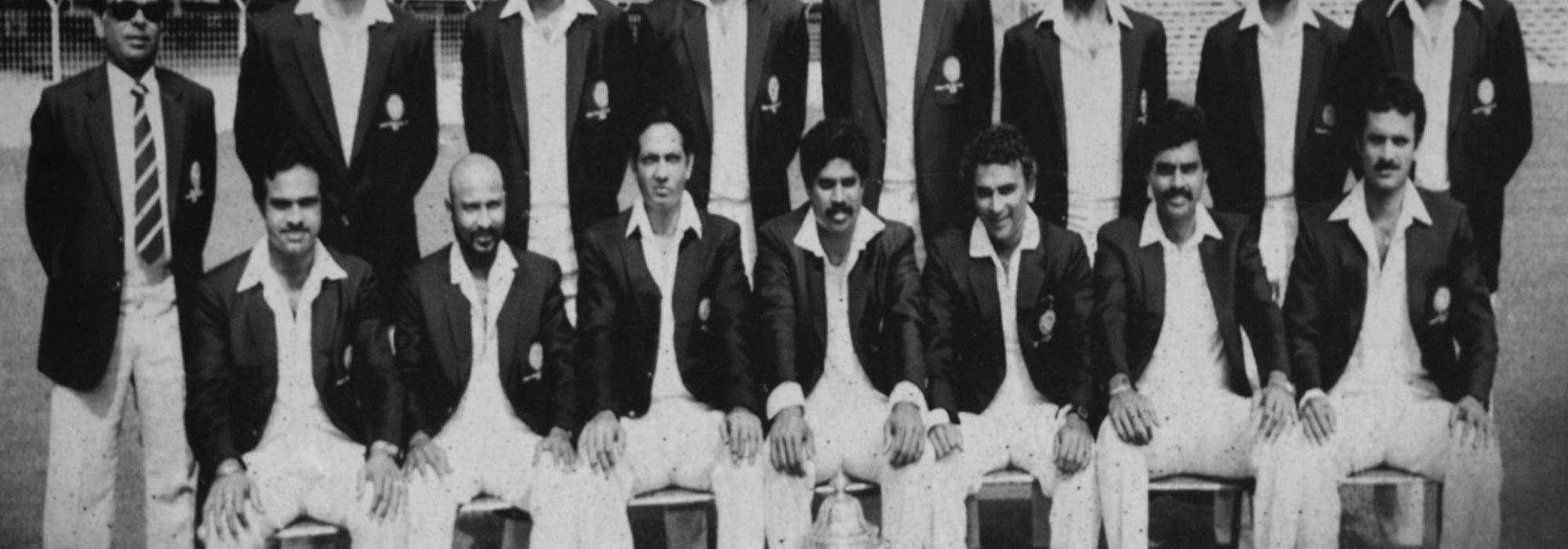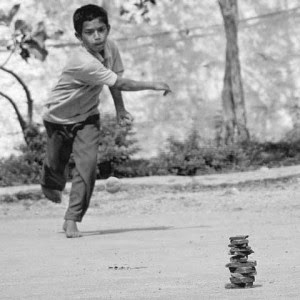For a cricket-crazed nation like India, we do not have to wait long before a cricket series starts, grooves us in to a sway of emotions, and causes a deluge of frenzied reactions to the victories or the defeats. Even as the cricket World Cup follows each other, every two years in the shortened 20-20 format and every four years in the longer version, the cricketing nations, a good number of them, are treated to a veritable swing of emotions from euphoria to depression following their team’s wins or losses. In India, where it has become a clichéd phrase to say that cricket is a religion, the cricketing fans, often aren’t too forgiving of the losses. We have witnessed extreme reactions from fans: players’ houses being stoned, their effigies burnt, photos blackened, and television sets being destroyed!
It may be insightful (or even instructive) to discuss, examine and critique our understanding of ‘sport’ and thereby also perhaps understand the reason(s) for such highly emotive and frenzied reactions that we often see closely associated with it.
Let us begin by examining the word ‘āṭa’ – a commonly used word in many South Indian languages like Kannada, Tamil and Telugu. The word ‘āṭa’ is related to the (same) Sanskrit word that has its etymological roots in āṭaḥ, aṭanam, aṭati, and āṭikā. All these words and forms bear the connotations of ‘wandering,’ ‘roaming,’ ‘moving,’ or of being ‘nomadic.’ All animals, including humans, for their basic existence, need to ensure food, security, rest, and peace. And for securing these, animals, naturally enough, take to ‘wandering.’
(All animals including humans ‘wander’ in order to ensure that their existential needs of food, security, and peace are fulfilled.)
It is only after the fulfillment of the basic needs of food, shelter, and security does one go beyond and seek other pleasures of the mind and body, or mirth, or even begetting progeny. It is in this basic struggle for survival that we find the word ‘āṭa’ rooted. Thus, etymologically, every sport (or game) intrinsically and inevitably bears an element of struggle and conflict. Furthering a more technical evaluation of the word ‘āṭa,’ it is in the fulfillment of the basic needs of ‘āhāra, nidrā, bhaya, maithuna’ (food, sleep, fear, and sex), driven by the heightened guṇas (traits) of rajas (vigour, passion and heightened activity) and tamas (ignorance, lethargy, chaos) that we understand the word ‘āṭa.’ Small wonder that ‘āṭa’ or ‘sport’ manifests the same guṇas of rajas and tamas in the players and also renders these tendencies on to the passionate followers of the game.
In Sanskrit, there exists another word, ‘krīḍā.’ It is understood mostly as ‘vihāra’ (pleasure, joy) or as an effort in (the pursuit) of Self-Joy. ‘Krīḍā’ is in essence different from the word ‘āṭa.’ Any effort towards Joy or to Delight oneself, invariably demands that the guṇas or the tendencies of rajas and tamas have to be overwhelmed and subdued by sattva, the guṇa of balance, harmony, creativity, and peace. Thus krīḍā is an effort to heighten this sattva. As this (sattva) becomes epitomized, it becomes līlā. In līlā, there is no conflict, no struggle, and no discord. All there is, is harmony and pure joy, bereft of disturbance.
In English, though we are colloquially familiar with the words ‘sport,’ ‘game,’ and ‘play,’ it is unlikely that we have made a critical assessment of their meanings and connotations. While the first two words – sport and game – are biased towards ‘āṭa,’ the third word, ‘play,’ is closer in connotation to ‘krīḍā. Thus, a ‘player’ bears deeper meaning than a ‘sportsperson.’ While a sportsman manifests more the struggle and the conflict agitated by the end-result of victory or loss, a player instead will seek fulfillment in enjoying and performing in detached nonchalance. It is therefore that the word ‘play’ extends itself to be used for artful pursuits of song, dance, and drama. A drama becomes a ‘play;’ we ‘play’ the (musical) instrument, and so on. We do not, however, observe such a fine distinction in the use of these words in our (Indian) languages. The word ‘āṭa’ is the more colloquially used form and is used generally for ‘drama’ and other stage performances as Bayalāṭa, Doḍḍāṭa, Saṇṇāṭa (Kannada), Dāsiāṭṭam (Tamil), Kūḍiaṭṭam, Mohiniaṭṭam (Malayalam), etc. But there is a quintessential characteristic in all these, in that they all strive towards transforming the baser tendencies of rajas and tamas that characterize ‘āṭa’ to becoming more refined and sāttvika as it is in fine arts. In this sense, sport is thus the more ancient and the lesser perfected predecessor of the arts.
An anecdote in the beginning of the nāṭyaśāstra is worthy of mention here. The devas, humans and the rākṣasas supplicated thus to Brahmā –
krīḍanīyakamiccāmo dṛśyam śravyam ca yadbhavet (1.11)
We desire that you grant us an (enjoyable) ‘toy’ that can both be watched and listened to, i.e., an audio-visual means of entertainment.
Brahmā thus created ‘nāṭya’ – theatre art. It is in this evolution and transformation from sport to play that entertainment too should find fulfillment in.
It is only appropriate that we now discuss the relationship between ‘sports’ (krīḍā) and ‘arts’ (kalā). [Note: The technicality has been relaxed in favor of colloquial ease and krīḍā is translated as sports here onwards.]
While both krīḍā and kalā serve to either entertain and/or to relax the mind, sports more excites the mind while art relaxes and composes it. Sports
, quite naturally demands a lot of bodily physical activity while classical arts demand more an emotional and intellectual involvement of the manas, buddhi, and citta – loosely clubbed together as ‘the mind.’ The use of the physical body is only complementary in nature in performing arts. The guṇa of rajas, the tendency of activity, becomes paramount in physical sports while a predominance of sattva becomes the goal of arts. It is natural then that an athletic, strong and/or an acrobatic body may well yield the victories in sports. But, this isn’t so in arts. Arts are more humanistic in nature. Even those references to animals, birds, flora, and fauna are all personified and humanized. It is a dictum amongst ālaṅkārikas (aestheticians) that without humanizing, there can be no evocation of rasa. It is therefore that the animalistic basal traits that characterize sports recede to allow a more emotive and aesthetic evocation in the arts. Sattva or the internal energy becomes the decisive factor here. Also, sports demand a much faster pace than in our normal lives. A passive, slow paced sport has hardly an enthusiastic follower. This pace and speed is again a result of the dominant rajas. But, arts on the other hand expect that we slow down. Slowing down bestows upon us the finer sensitivity to understand and empathize with the emotions and feelings in a threadbare manner. Our heart, poetically known as the seat of emotions, has the sensitivity to resonate to the finest threads of an emotional dissection. But it is unfortunate that today’s performing arts, be it song, dance, drama or cinemas have rendered themselves to reckless pace and speed. The competitiveness of sports and its concomitant rājasika nature have corrupted the performing arts. Even those sports that are characterized by an enjoyable and soothing slowness- like the folk games, the games that children play and of the ladies are all but lamentably disappearing.
Further, the itch of competitiveness and the resulting victories or defeats have further corrupted the arts. Such competitiveness is an unhealthy intrusion into arts. Primarily, a game or sport is, by its very definition, a competitive fight between two people or teams. So it becomes almost impossible to be dispassionate in sports. But in arts, we see no such external or physical conflicts. If there is any agitation or friction at all, it is only internally in the mind and is never outwardly manifest. And this too is reined in and regulated by the dispassionate state of rasa.
Nevertheless, a sport well played can surely transcend to an art. In fact, the measure of sublimity of a sport is its ability for artistic expression and creativity. Thus, a sport that doesn’t transcend to an art, remains just a conflict or fight. Equally, when an art form degenerates to just a state of conflict and does not transcend the basal likes and dislikes (rāga-dveṣa), it becomes unsavory and even repulsive.
Therefore, a sport in its most evolved form, is a state of Joy and thus becomes an art (kalā). Indeed, sports too should elevate to become an art. But it may seem ironic that we so often hear the advice of Vedānta of how our lives should be like a play – ‘khelana.’ (The word khela and keli stem from the root verb form kheḷ, keḷ. These again are related to ‘āṭa’ that we have already seen. Thus, khelana again denotes movement or dynamism in its subtler form. This movement too is of the nature of the cosmic order (ṛta). It is also a popularly accepted norm that all root words denoting movement or dynamism (gathyarthaka dhāthu) also denote jñāna (jñānarthaka dhāthu). Thus, khelana also is jñāna).
‘Play’ (krīḍā) is characterized more strongly by a sense of enjoyment, an enjoyment borne of liberation rather than by competitiveness. Let us continue to examine a few more details in this regard.
It is apt to recall here what venerable Prof. M Hiriyanna says, ‘What is not pursued for its own sake will not become a value.’ In this regard, ‘arts’ and ‘sports’ (more accurately, ‘play’) are both equally values. ‘Play,’ by its very essence, is something that can manifest spontaneously and effortlessly needing no preparation or practice. We may recall here how a little child’s fun-filled frolicking is so aptly phrased ‘child’s-play.’ In essence, though child’s-play may qualify to be called an ‘art,’ we may lack a well-established śāstric refinement to call it so. That is because the very form or structure of art demands a balance of both proficiency and practice. But, ‘playing’ on the other hand is essentially a spontaneous and effortless expression of enjoyment needing no practice or preparation. That is why we see our folk arts and folk-games are inseparably linked. So are the children’s arts and sports (again, should be read as play). A child’s play, though appearing meaningless, untutored, untrained, and betraying no discipline, causes immense enjoyment by just our being in that situation and place. That is how (mere) playing becomes a thing of value. But, when krīḍā ceases to be pursued for its own sake and is no longer an end in itself, it degenerates to a mere occupation or a paid profession.
D V Gundappa in his Mankutimmana Kagga beautifully characterizes ‘āṭa’ (play). He says, “ಆಟಕ್ಕೆ ಫಲವೇನು? ಕೌತುಕದ ರುಚಿಯೆ ಫಲ.” What is the fruit of playing? That vehement desire (to play) is itself the fruit. He continues in the same verse, “ಏಟಾಯ್ತೆ ಗೆಲುವಾಯ್ತೆಯೆಂದು ಕೇಳುವುದೇನು? ಆಟದೋಟವೆ ಲಾಭ – ಮಂಕುತಿಮ್ಮ.” Did you get hurt? Did you win? Why such (futile) questions? The very act of playing is the gain.
Unfortunately, we seem to have forgotten this true nature of sports. We indulge in it, not for the enjoyment of its intrinsic joy, but more for the extraneous benefits.
When children play, they are the players and also their own spectators. So, every fall, rise, triumph and loss, become enjoyable. Such is the nature in folk-arts and folk-games. There is joy in its simplicity. But as these simple sports transform or evolve to become more and more complex and as the players and the spectators grow more and more distinctly, the player no longer is playing and enjoying for his own self, but is more reacting to the demands of the spectators. The joy of playing is lost. It becomes just a performance and many times degenerates to a monetized profession. Then, how should a sport evolve? Should it then not evolve or refine itself at all? Isn’t there a direction then to a ‘vikāsa’? What then is the limit to a meaningful evolution and refinement? Is there a limiting boundary at all? It surely isn’t easy to find this boundary. The comprehension of the difference between kṛti (artistic) and kṛtaka (artificial) is rather ambiguous and difficult to discern. But there indeed is such a distinction. There is a fine line differentiating the two. Even if the differences are difficult to discern, it is still possible to clearly separate the kṛti from the kṛtaka. What becomes difficult and nuanced is when we have to evaluate all those that qualify as a kṛti and associate a measure to the kṛti being higher or lesser in caliber. What then is the measure and the mechanism that can help us in this evaluation of a kṛti? We ought then to employ the guidance of our rich, highly refined, living cultural tradition that surely would have devised a mechanism to differentiate the artistic and the artificial. One such instrument – a simple and an easily employable working measure is to evaluate any art or sport in the light of the Joy that it imparts and the concomitant material gains like money, fame, or adulation that it brings. As a simple rule, the material gains should only be an unsought byproduct, like a bonus that should never surpass the remuneration. But why even apply this yardstick uniformly to all? Why this measure? Would it not be simpler and easier if we simply segregate the artists and players (sports-persons) based on for whom it is a (paid) profession vis-à-vis for whom it is an avocation? Such an explanation, though possible should not reduce to an escapist ploy. Any facet of life, once employed (even) as a profession would immediately have to follow the rules and business-conduct of that profession. But many are such professional artists and sportspersons around us today whose (material) gains are grossly disproportionate to their input or contribution to their professions. They only reiterate the fact that we have deviated a long way from the true nature of arts and sports. It is imperative then that an honest and careful assessment of the true nature of arts and sports is undertaken. Else it will be no surprise that the skills of the artist or sportsperson become increasingly prostituted for monetary or material gains alone.
There are also many highly accomplished and revered maestros in arts and in sports who have made enviable economic and material gains, yet have wholly devoted themselves to the cause of the chosen art or sport, deeply revering it, considering it a penance and have portrayed through them the spirit of patriotism and even a means to social welfare. Commendable indeed are such masters. Equally detestable are those who have pawned their skills to mere monetary gains or even to the extent of allowing it to be betted upon. Such acts bare the art or sport of its inner beauty, of its sattva and spirals it down to a state of tamas, of dullness and ignorance. Such performers who have made their art or sport a traded commodity in the whimsical stock market relinquish their voice to opine on the true nature and value of art or sport. They cease to be its true ambassadors.
This article, in many places has treated the arts and sports in unison, while in others has treated them differentially. In both (arts and sports), there are a number of unifying factors as there are also a number of diverging factors. In art mainly, the āhārya-sattā or ‘nātyadharmī’ (stylization) influences it greatly while such an influence is not so in sports. That is why in arts, the universal experience of Rasa is predominant while it is the subjective and personalized experience or bhāva in sports. This again is due to the progressive influence of jñānendriya-karmendriyas (the organs of sense and action), the manomaya-vijñānamaya (sheaths of the mind and the intellect) and the annamaya-prāṇamaya-kośa (sheaths of the physical body) to arts and sports respectively. Bharata, Bhoja and other aesthetes have said that every sthāyi-vyabhicāri bhāva (predominant and auxiliary emotions) will eventually gain the state of Rasa (rasatva). The eventual goal of both arts and sports is Joy, ānanda. For sports, while nature and instincts i.e., prakṛti may itself become the basis (adhikaraṇa), the arts require a certain refinement, i.e., samskṛti. In fact, from the standpoint of the highest Truth, our life itself is a sport, a play, an art and yoga. And for those well-rooted in this knowledge (the knowledge of the Self), for whom every learning is an experience, even a war field becomes a play-field or a performing-stage. For such ones, the rājasika ecstasies of enjoyment while playing are hardly a barrier to true joy. Sports too, as in arts, demand one to be dispassionate and maintain a certain neutral distance even while being fully immersed in it. This then is exactly what is ambient for the enjoyment of the arts. In essence, from the perspective of those worldly and common achievers, it seems that the arts lend themselves more to sattvonnati, the elevation of sattva, than sports.
In any case, more critiques of this nature are welcome from those who have the wisdom and the experience.
Translated into English by Chandrashekhar K S from Śatāvadhāni Dr. R. Ganesh's Kannada essay ಕ್ರಿಕೆಟ್ಟಿನಿಂದ ಕ್ರೀಡಾಮೀಮಾಂಸೆಯತ್ತ, which features in his anthology ಕಲಾಕೌತುಕ. Thanks to Dr. Ganesh for his detailed review of the translation. Edited by Arjun Bharadwaj and Hari Ravikumar.


















































Comments